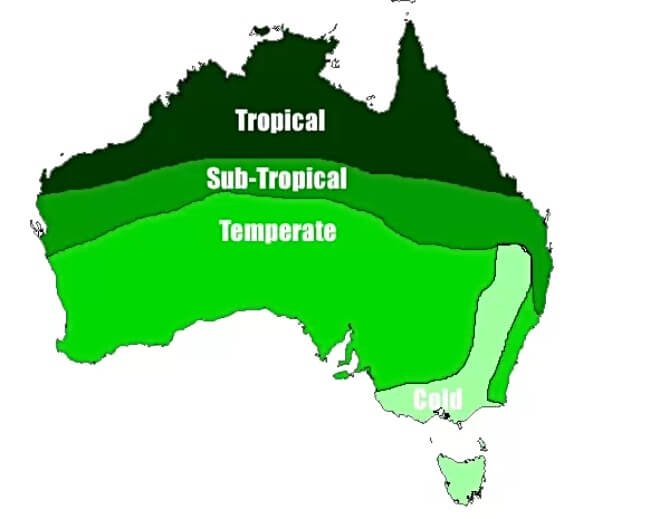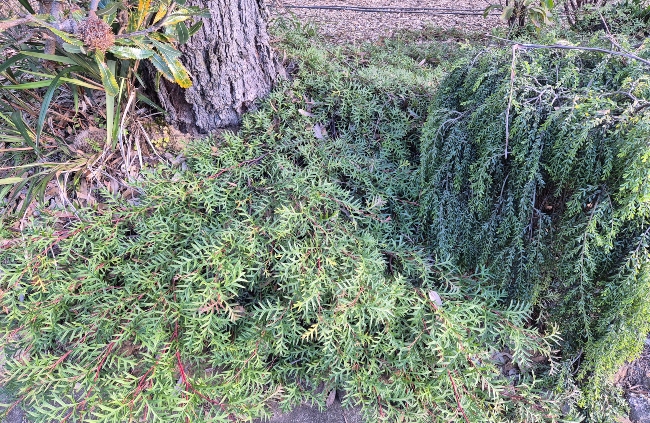Now that you’ve downloaded Master Growing Australian Natives, you’re ready to take the first steps toward transforming your garden. In this guide, I’m going to walk you through how to apply the core principles from the ebook and get your native garden thriving.
1. Understand Your Local Climate

Before you dive into selecting plants, it’s essential to get a clear understanding of your local climate. Australia’s varied environments mean that different plants thrive in different regions.
- Find Your Hardiness Zone: Australia’s hardiness zones can range from tropical to temperate and arid. Identify your zone to help narrow down the plants that will thrive in your garden.
- Consider Temperature Extremes: Some natives can handle frost, while others prefer heat. Think about how hot or cold it gets in your region, especially during the extremes of summer and winter.
Pro Tip: If you’re unsure of your hardiness zone or local climate specifics, a quick call to your local nursery or a look online can give you the info you need.
2. Start with Your Garden’s Microclimate
Now that you understand your overall climate, it’s time to focus on your garden’s unique microclimates. Different areas in your garden may have varying sunlight, moisture, and wind exposure, which will impact where you plant.
- Observe Your Garden: Spend a day (or a few days) observing where the sun hits, which areas stay shaded, and how water drains after rain. Does one corner stay soggier while another dries quickly? These observations will guide where you plant.
- Group by Microclimate: Once you’ve made these observations, group plants that have similar needs together. This will save you time and make watering and maintenance much easier.
Pro Tip: Use mulch to regulate soil temperature and keep moisture consistent. Your plants will thank you!
3. Make a Planting Plan
The ebook gave you a solid list of great native plant options, but now it’s time to create a personalised planting plan for your space. Planning ahead will ensure your plants have the best chance to thrive.
- Create Layers: In nature, plants grow in layers—groundcovers, shrubs, and trees. Mimic this in your garden to create a balanced, thriving ecosystem.
- Spacing Matters: It might be tempting to crowd plants in, but giving them the space they need will encourage healthier growth and reduce competition for water and nutrients.
4. Choose Plants by Size and Growth Habit
When choosing plants, think about their mature size and how they will interact with other plants in your garden. Creating a variety of heights and textures will add depth and interest.

- Groundcovers: Start with low-growing plants like Dichondra or Myoporum. These help cover bare soil, reduce weeds, and add interest at the garden’s base.
- Shrubs: Next, add medium-sized plants like Grevilleas or Callistemon (Bottlebrush). These fill in the middle layer and are great for attracting birds.
- Trees: If you have space, consider native trees like Eucalyptus or Acacias. These provide height and structure, creating shade and shelter for other plants and wildlife.
Pro Tip: Leave enough space between plants for their mature size. This will prevent overcrowding and help ensure healthy growth.
5. Soil Prep: Simple but Essential
Healthy soil is the foundation of a thriving garden. While native plants can tolerate a range of soil conditions, giving your plants a good start with healthy soil will make all the difference.
- Organic Boost: Incorporate compost or organic matter into the soil to improve structure and water retention.
- Test Your pH: Some native plants, like Grevillea, prefer slightly acidic soil. Use a pH test kit to check your soil and adjust as needed.
6. Water Wisely
Even though native plants are drought-tolerant, proper watering—especially in the early stages—is crucial to getting them established.
- Deep Watering: Water your plants deeply but less frequently to encourage strong root systems. For new plants, water regularly until they’re well established (usually after a year).
- Mulching Magic: Keep a layer of mulch around your plants to reduce water evaporation, keep the soil cool, and prevent weeds.
7. Think About Seasonal Interest
A well-designed garden looks beautiful year-round, and by selecting a variety of plants that bloom at different times, you can enjoy constant colour and texture in your garden.

- Spring Bloomers: Choose plants like Wattle (Acacia) or Waratah that bloom in spring to kick off your garden with a burst of colour.
- Summer Colour: Keep the show going in summer with Kangaroo Paw or Grevillea, which handle the heat beautifully.
- Winter Interest: Even in the cooler months, plants like Banksias or Hakeas provide vibrant winter colour.
Pro Tip: Consider planting a mix of evergreen and deciduous plants to ensure year-round interest, even when some plants aren’t in bloom.
8. Choose Plants That Work for You
While creating a diverse garden is exciting, it’s also important to select plants that align with the amount of maintenance you’re willing to do.
- Low-Maintenance Options: Many native plants, like Westringia (Coastal Rosemary) and Correa, require minimal care once established, making them ideal for gardeners who prefer less maintenance.
- Drought-Tolerant Choices: If you live in a particularly dry area, opt for drought-tolerant natives like Kangaroo Paw, Banksias, or Eremophila. These plants can handle periods of low water without suffering.
The key is to create a balance between the plants you love and those that will fit your lifestyle.
By following these steps and applying what you’ve learned from Master Growing Australian Natives, you’ll be well on your way to creating a stunning, sustainable native garden. Ready to get started?


Get Your Free Guide:
Master Growing Australian Natives eBook
A Must Have Complete Guide for Every Australian Garden
Get Your Free Guide:
Master Growing Australian Natives eBook
A Must Have Complete Guide for Every Australian Garden
Australia’s size and diverse range of climates make it a bit tricky to categorise our growing guides by specific regions just yet. However, we have a wealth of Australian native plant growing guides available.
Simply use the search box below to explore plants or species you’re considering, and discover if they’ll be a good fit for your garden.
Published on September 1, 2023 by Gary Clarke
Last Updated on October 18, 2025

